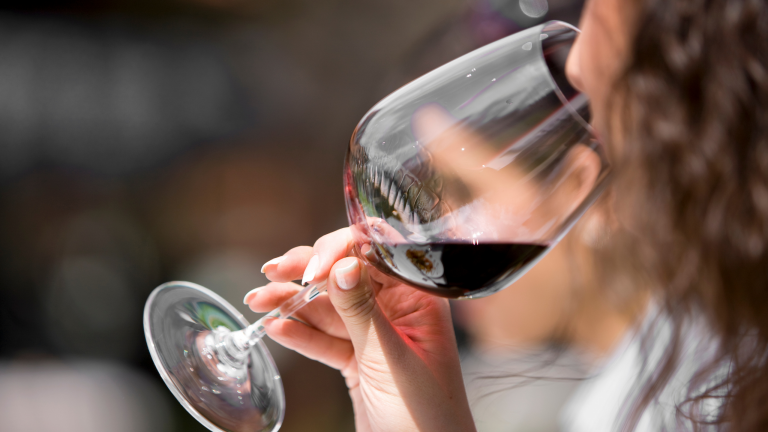Want to learn how to taste and evaluate a glass of wine like a wine connoisseur? If you want to swirl, sniff and sip like a pro then check out these top tips from award-winning Central Otago boutique wine maker, Waitiri Creek Wines.
Navigating the world of wine drinking can be an overwhelming experience for new wine drinkers. “However, all you really need to drink wine correctly is to be curious and enthusiastic to try new things,” says Alistair Ward founder and owner at Waitiri Creek Wines. Each wine has its own personality reflecting the type of grape, vintage (year) local climate and winemakers flair, he says.
The first step in tasting wine is to inspect the wine colour. The colour of wine gives you hints about its style, body and character. The colour can also indicate the wine’s age. Usually, white wine deepens in colour as it gets older while red wine becomes paler.
You can examine the wine by looking straight down into the glass, then holding the glass up to the light, and finally, give it a tilt, so the wine swirls toward the edges. “This will allow you to see the wine’s full color range,” comments Alistair.
If the colour looks quite pale and watery near its edge as you swirl it, this suggests that the wine could be lacking in flavour. In white wine, if the colour looks tawny or brownish (or orange in red wine) this is indicative of an older wine or a wine that has been oxidized and may be past its peak.
Now that you’ve given the wine a good inspection, you should now be ready to take a good sniff. Give the glass a swirl as swirling will aerate the wine and releasing all the aromas. “Take a few quick, short sniffs, then step away and see what smells you can identify,” adds Alistair. Common wine aroma includes descriptors of fruity, woody, pungent, floral, spicy, nutty, and chemical.
The next step is the fun part – tasting! Take a sip and swirl it around in your mouth until it coats every part your tongue. “This will warm up and aerate the wine, which helps in releasing its unique flavors,” advises Alistair. The palate of the wine should reflect the aromas as flavours. Here is what to look out for:
Acid
Acidity is what causes the mouth to water and is what makes wine taste so refreshing and vibrant.
Tannin
Tannin is present in grape skins and is a bitter flavour and causes the dry feeling in your mouth. Ripe tannin contributes to the viscosity ( or thickness) of a wine.
Alcohol content
The alcohol content of a wine is the amount of ethyl alcohol in a wine. A wine with a low alcohol content may taste sweeter on the palate.
The body
The body describes the weight of the wine. It can be light or heavy, soft or firm, sweet or dry.
Now that you understand the basic steps of wine tasting, it’s time to experiment on your own. Teaching yourself to taste wine engages the senses of sight, smell, taste, and touch, all with the goal of finding a wine that you can enjoy with your favourite friends and food.
Contact Waitiri Creek:
sales@waitiricreekwines.co.nz
021 2402988
https://www.waitiricreekwines.co.nz/home
https://www.facebook.com/saleswaitiricreekwines/
Contact MediaPA:
Phone: 0274 587 724
Email: phillip@mediapa.co.nz
Website: www.mediapa.co.nz
Facebook: www.facebook.com/MediaPA
YouTube: www.youtube.com/user/TheMediaPA
Instagram: www.instagram.com/media_pa




